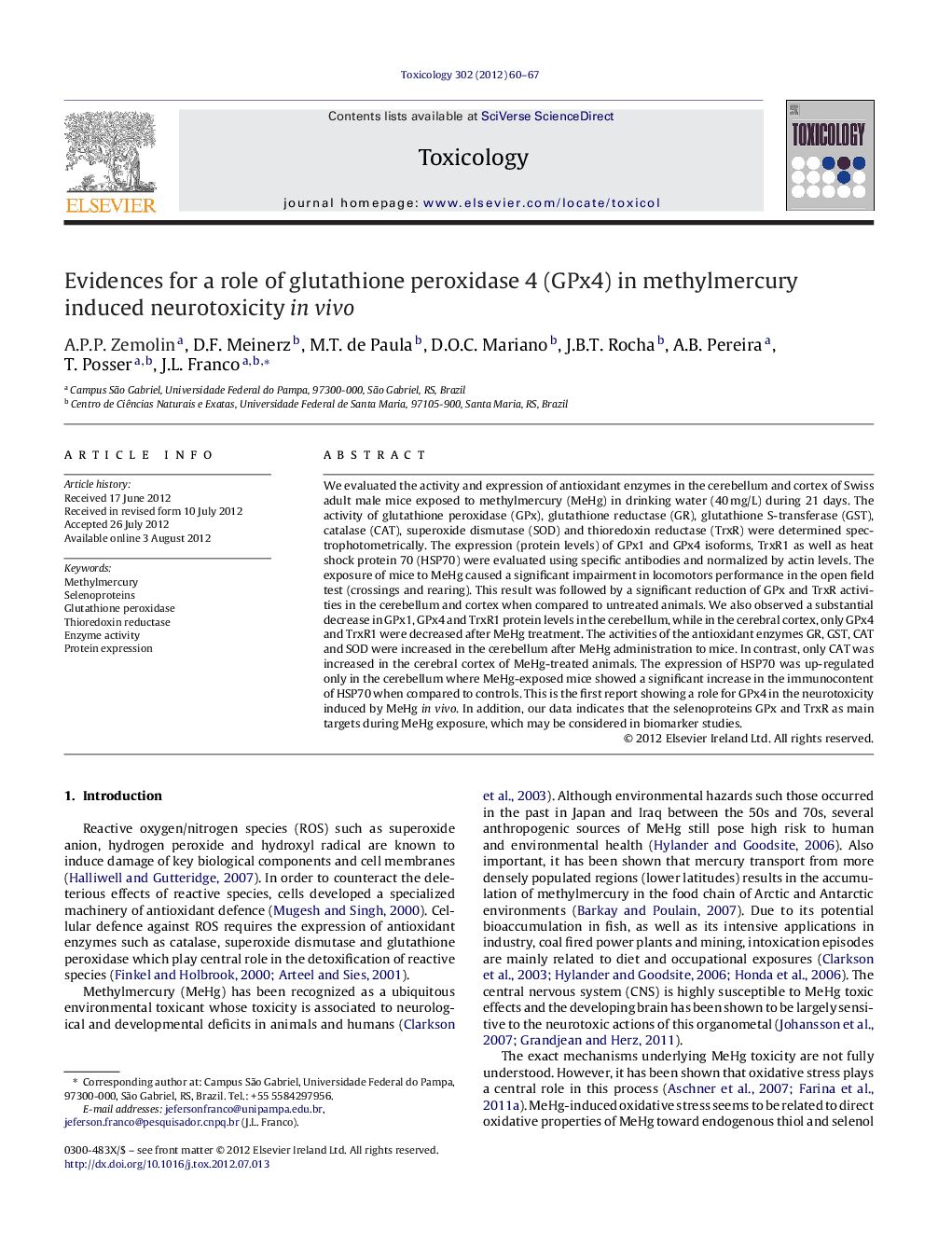| Article ID | Journal | Published Year | Pages | File Type |
|---|---|---|---|---|
| 5859557 | Toxicology | 2012 | 8 Pages |
Abstract
We evaluated the activity and expression of antioxidant enzymes in the cerebellum and cortex of Swiss adult male mice exposed to methylmercury (MeHg) in drinking water (40Â mg/L) during 21 days. The activity of glutathione peroxidase (GPx), glutathione reductase (GR), glutathione S-transferase (GST), catalase (CAT), superoxide dismutase (SOD) and thioredoxin reductase (TrxR) were determined spectrophotometrically. The expression (protein levels) of GPx1 and GPx4 isoforms, TrxR1 as well as heat shock protein 70 (HSP70) were evaluated using specific antibodies and normalized by actin levels. The exposure of mice to MeHg caused a significant impairment in locomotors performance in the open field test (crossings and rearing). This result was followed by a significant reduction of GPx and TrxR activities in the cerebellum and cortex when compared to untreated animals. We also observed a substantial decrease in GPx1, GPx4 and TrxR1 protein levels in the cerebellum, while in the cerebral cortex, only GPx4 and TrxR1 were decreased after MeHg treatment. The activities of the antioxidant enzymes GR, GST, CAT and SOD were increased in the cerebellum after MeHg administration to mice. In contrast, only CAT was increased in the cerebral cortex of MeHg-treated animals. The expression of HSP70 was up-regulated only in the cerebellum where MeHg-exposed mice showed a significant increase in the immunocontent of HSP70 when compared to controls. This is the first report showing a role for GPx4 in the neurotoxicity induced by MeHg in vivo. In addition, our data indicates that the selenoproteins GPx and TrxR as main targets during MeHg exposure, which may be considered in biomarker studies.
Keywords
Related Topics
Life Sciences
Environmental Science
Health, Toxicology and Mutagenesis
Authors
A.P.P. Zemolin, D.F. Meinerz, M.T. de Paula, D.O.C. Mariano, J.B.T. Rocha, A.B. Pereira, T. Posser, J.L. Franco,
